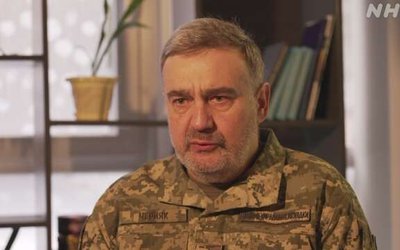
An illuminating meeting with Mohan ShumsherRana’s grandson makes me question the nature of downfalls and power.
I’m surrounded by bird songs, fetching fauna and a sense of serenity in an oasis of Kathmandu’s dusty bustle. Driving through the gates of Pashupati SJB Rana’s palace, time stands still. The hectic world outside is such a contrast with the peacefulness within.
Pashupati is the grandson of Mohan Shumsher who was the last ruling Rana. These were the hereditary Prime Ministers of Nepal whose dynasty’s premiership lasted from 1846 to 1951.
At the time of the uprising that deposed of his family, Pashupati was merely ten years old. With his thick, aristocratic, British accent, he tells me that he remembers little of this other than him and his sisters being sent to Shimla in India. “My grandfather feared a Russian Revolution type situation at the time and it was not safe for children to be around for this.”
Despite calls from Shumsher’s own brothers to see a “fight to the death” against the rebels,Pashupati informs me that it’s to his “grandfather’s great credit that he managed a peaceful transferral of power”. He defied his siblings and managed to safeguard the security of every party involved in the revolt.
Pashupati explains how his grandfather secured his position as PM for a few more transitional years as well as retaining the family lands and estate.
Whilst I understand how this achievement was good for the stability of Nepal at the time, I can’t help but think how it’s also been good for the Ranas.
Pashupati’s father, BijayaShamsher, was ambassador to India for many years after 1951. In fact, Pashupati claims he is credited for ensuring Nepal’s independence from its southern neighbour after the partition of India. If true, this means he was a man of significant authority – a sentiment he stresses I understand.
Similarly, Pashupati himself is a man of noteworthy political importance and has held numerous cabinet positions. He’s been the Minister of Foreign Affairs, Finance, Water Resources, Panchayat, Transport & Tourism, and Education. He was in charge of the transferral of power from the Monarchy to democracy in 1990, and has been at the top of Nepali politics for over half a century.
Their dynasty “fell” in 1951 and yet here I am in the grounds of a Palace talking to a Rana who has continually shaped the way Nepal fundamentally functions. If Shumsher’s brothers had got their wish of resisting the rebels until their doom, would I still be talking to this man?
It strikes me as unlikely.
What I begin to realise is that Shumsher’s greatest achievement really was the peaceful transferral of power. Whatever his reasoning may have been, it has ensured the continuation of his family’s diplomatic clout to this day. The Ranas have always been a lineage obsessed with securing their own stability. From allying with the British to ward off rivals to peacefully transferring power in 1951, they have played their cards right at every turn and are yet to fall into the abyss of insignificance.
In contrast, Nepal’s royal Shah dynasty handled their demise poorly and today are near irrelevant. After more than two-hundred years of being figureheads, the Shah’s wrestled back power in 1960 in King Mahendra’s coup, which started the absolutist Panchayat regime. However, in 1990 the monarch’s power was reduced to that of a figurehead again before King Gyanendra performed another take-over in 2005. In 2008 the Nepali congress served him an eviction notice and the Shah dynasty was finally over. This constant fighting against the tide of republicanism was doomed to fail and their stubbornness dug their own grave.
This is a tale of two dynasties. One that let go of power at the right time and has consequently retained influence over Nepali politics, and another that failed to reform and subsequently finds itself in the wilderness. The Shahs still have support of course but it’s limited. Pashupati’sRastriyaPrajatantra Party has always been royalist but even he admits their stance on the monarchy is now one of “ambiguity”.
What I begin to infer is that Shumsher’s willingness to surrender power is evidence of a greater global trend – knowing when your time’s up. All empires have their peak and how they handle the inevitable descent is of primary importance to the nature of route down. Do they refuse to admit that the peak’s finished, like the Shahs, or do they have the wit to read their maps and find a new path down?
Pashupati married into India’s Scindia family – another dynasty that serves to prove the importance of knowing when to relinquish rule. They governed the Gwalior State which was absolved into modern India. Today they live in the lavish Jai Vilas Mahal, and can count JyotiradityaMadhavraoScindia, India’s ex-minister of state, among their ranks. They could have fought to preserve their power, but they didn’t.
There are other princely states of India that serve as great examples of this phenomenon. One of these being the Gaekwod Dynasty, whom ruled Baroda and remain influential today. Many of the family’s heads have been MPs and Ministers, and their estate is worth $4.2billion. That’s the equivalent to 17% of Nepal’s nominal GDP.
A third example is the former royal house of Jammu and Kashmir – the Dogras. They joined India in 1948 and today host prominent politicians in Karan and Bhim Singh. Karan was India’s ambassador to the US, received a nomination for the presidency in 2017, and is a senior member of the India National Congress Party. His brother Bhim is a prominent and controversial figure in the Kashmir, where he’s a household name.
There was a dynasty that made the same mistake as the Shahs though – the AsafJah of Hyderabad. Their state was by far the largest and most prosperous princely state in India. It covered more than two-hundred thousand square kilometres with over six-million inhabitants, had its own rail network, airline, currency and army.
The AsafJah refused to join the new Indian dominion which led to an invasion of their land. The AsafJah were deposed of and with this they lost their political influence. The Scindias, Gaekwods and Dogras read their maps but the AsafJahs didn’t and subsequently fell off a cliff.
The age-old clichés of “all empires must fall” and “what goes up must come down” are still true. However, speaking to Pashupati makes me realise the complexity of these sayings. The Ranas are still major players in Nepal whilst the Shahs aren’t, and just from speaking to Pashupati I can sense this. He commands the interview like a seasoned pro and side-steps my more goading questions authoritatively. His experience with journalists means I have an interview where I am getting very few controversial statements from him – just as he wants.
It was over half a century ago that the Ranas lost their power and yet they’re still here. Now the family has an educated and well-connected younger generation coming of age, I’m left to ponder what influence they will continue having. As Pashupati leaves me, I feel I’m stood in the grounds of a dynasty that will continue to influence the very top of Nepali society for some time to come. They have Shumshur and his political skills to thank for this.

Alex Bushnell
Alex is an intern
- Communists And Insurgents: Nepal’s Past And Present
- May 25, 2018
- Ghandi & Associates’ Coveted Founder Speaks About His Past And Nepal’s Future
- May 04, 2018
- Nepal’s Top Lawyer Decries Corruption And Nepotism’s Effects On Investment
- May 04, 2018
- “Chandra Shumsher’s Accomplishments Are Iconic”
- Apr 21, 2018
- Art’s Battle In Kathmandu
- Apr 07, 2018















